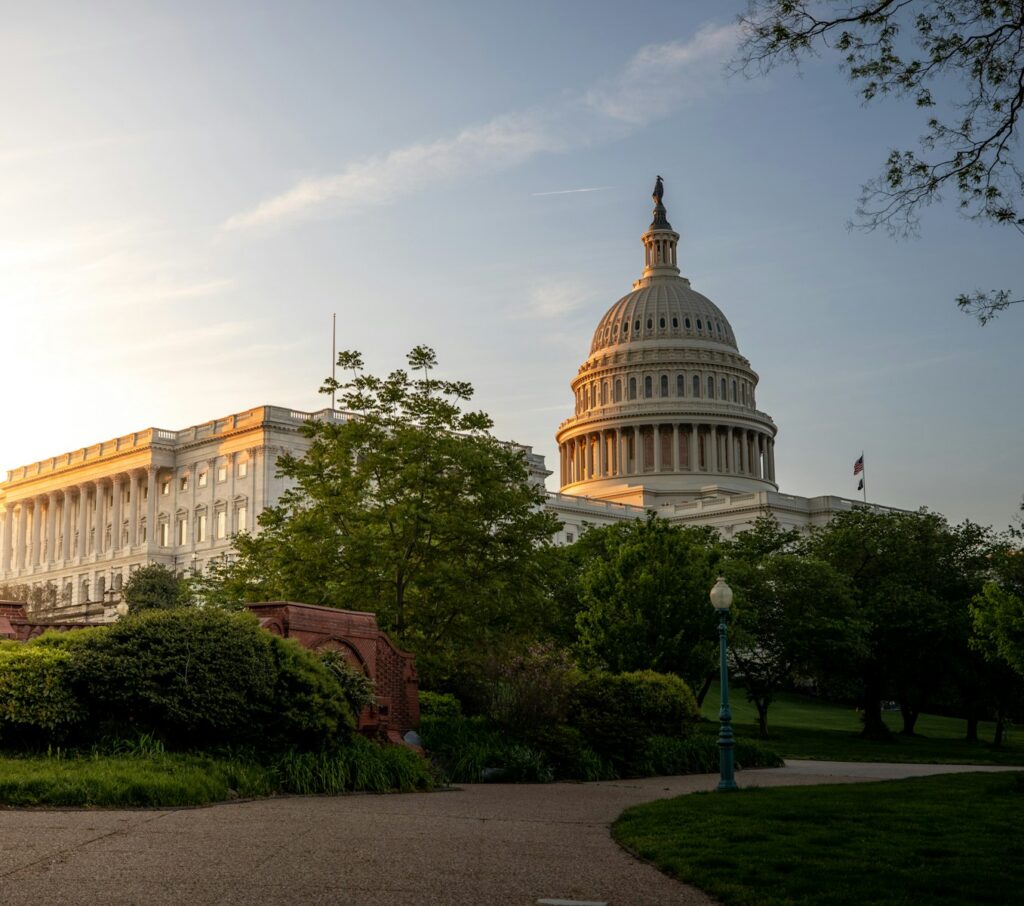Turbulent Times Ahead: What Mental Health Providers Should Know About the Federal Budget & Shutdown Risks

Fall 2025, mental health and behavioral health providers face a uniquely fraught intersection of shifting federal priorities, possible government shutdowns, and proposed spending cuts. The changes in the budget environment—and in the structure of federal agencies—could materially affect both your operations and the wellbeing of the clients you serve.
This post gives an overview of the most salient proposals and risks, and then offers observations and practical ideas for providers.
What’s happening at the federal level
Below is a summary of key developments that are especially relevant to mental health and behavioral health:
1. Proposed cuts to behavioral health and related agencies
-
In the FY 2026 “skinny” or baseline proposals, large cuts to CMS, the Employee Benefits Security Administration (EBSA), and other oversight bodies are being floated. These agencies play critical roles in ensuring insurance coverage, enforcement of mental health parity, and oversight of benefit designs.
-
Proposed restructuring of SAMHSA and HRSA funding includes about $1 billion in cuts to programs supporting community mental health, training, substance use services, and underserved populations.
-
The proposed budget also plans significant reductions in NIH and CDC funding, which would slow research, innovation, and evidence-based model development in behavioral health.
-
More broadly, the Trump administration’s HHS reorganization (announced in 2025) would merge multiple agencies (e.g. SAMHSA, HRSA, noninfectious disease units of CDC and NIH) into a new “Administration for a Healthy America,” while cutting tens of thousands of positions.
-
“Backdoor” cuts are also under discussion—delays or rescissions in allocations already approved but not yet spent may erode funding for human services or training programs.
These proposals remain under negotiation and are not final, but they signal a shifting federal posture toward narrower discretionary support for behavioral health.
2. Impending risk of a government shutdown
As of late September 2025, Congress has not reached agreement on a continuing resolution or full budget, putting the federal government on the brink of a shutdown beginning October 1. Some relevant dynamics:
-
Many federal agencies have already been asked to prepare contingency plans, including for permanent reductions in force, not just short-term furloughs.
-
If a shutdown occurs, HHS is projected to furlough over 40 % of its workforce (some 32,000+ employees), which would curtail routine agency functioning, oversight, communications, and contracting operations.
-
Importantly, “mandatory” spending (e.g. Medicaid, Medicare) generally continues, but discretionary programs are vulnerable.
-
In prior shutdowns, agencies like SAMHSA have managed to keep critical behavioral health services (e.g. 988, crisis counseling programs) running, but rulemaking, grant awards, waivers, and new approvals tend to stall.
-
A fallback continuing resolution passed by the House would extend funding through November 2025, but it has not passed the Senate.
3. Changes to Medicaid eligibility, funding formulas, and work requirements
Part of the broader budget negotiation centers on reforms to Medicaid, including proposals that could alter eligibility, impose new “work or volunteer” requirements, and increase state cost-sharing burdens.
If a reconciliation package passes (or if cuts are inserted into the continuing resolution), these changes could roll back access for many clients who rely on Medicaid as their primary payer.
Additionally, the “One Big Beautiful Bill Act” framework (already partially adopted) includes cuts to Medicaid and stricter oversight on state spending and eligibility.
Medicaid, as many clinicians know, is a backbone payer for community mental health services. If eligibility shrinks or reimbursement is squeezed, providers and clients alike could see real harm.
What the changes might mean for mental health providers (and their clients)
Below I try to translate these federal-level risks into plausible downstream effects. Some are more speculative than others, but worth watching.
Service disruptions & delays
-
Grant cycles stalled: New SAMHSA or HRSA grants, discretionary funding solicitations, and cooperative agreements may be delayed or cancelled. (In past shutdowns, NIH paused new grant reviews and agency operations stalled.)
-
Waivers and state plan amendments delayed: If states need to request new behavioral health waivers (e.g. for tele-health expansions, reimbursement innovations, or flexibility during crises), CMS staff may be furloughed, slowing approvals.
-
Slower contracting and reporting: For providers that hold contracts with federal or state agencies funded in part federally, delays in approvals, audits, or funding disbursements may cascade.
-
Telehealth and reimbursement uncertainty: If telehealth flexibilities (especially under Medicare or Medicaid) require Congressional reauthorization, a shutdown or budget impasse could imperil those policies midstream.
-
Disruption of behavioral health crisis infrastructure: Essential programs like the 988 lifeline, disaster counseling, and mental health disaster response may be protected, but other non-crisis programs (peer support models, expansion efforts) are at risk.
Financial stress on providers
-
Cash flow challenges: Delays in federal or state reimbursements could strain already thin margins for nonprofit or community mental health agencies, especially those relying on multi-payer mix or sliding fee scales.
-
Reduced revenue from payer cuts: If Medicaid or behavioral health carve-outs shrink or impose lower reimbursement rates, providers may see lower per-case revenues.
-
Increased uncompensated care burden: As clients lose eligibility or shift out of coverage, providers may face more uninsured individuals or more clients who cannot pay co-pays.
-
Administrative burden: Navigating shifting rules, emergency waivers, or patchwork state rules could increase the time cost of compliance, billing, credentialing, and audit risk.
Access and equity impacts for clients
-
Clients losing coverage: Millions could lose Medicaid or marketplace coverage under proposed budget cuts or reforms. Some estimates suggest 7.8 million Americans might lose Medicaid eligibility under certain proposals.
-
Care interruptions: Clients in mid-treatment may experience gaps in access to services or disruptions in coordination if agencies or payers pause operations.
-
Reduced innovation and research translation: Smaller budgets or fewer grants for implementation science may slow the diffusion of novel evidence-based interventions, particularly in underserved settings.
-
Worsening unmet needs: High-need populations (e.g. rural, low-income, marginalized communities) may be hit hardest by cutbacks, compounding existing disparities.
-
Increased pressure on safety-net systems: Hospital emergency departments, crisis teams, and inpatient psychiatric settings may see more demand as outpatient systems strain.
Operational uncertainty and morale challenges
-
Staffing turbulence: Just as the federal workforce braces for layoffs, mental health agencies may find retention harder in an uncertain climate.
-
Planning difficulty: Long-range strategic planning becomes risky when the federal funding baseline is in flux and program continuation is unclear.
-
Partnership and contracting disruptions: Federally supported community partnerships (with schools, housing programs, criminal justice programs) may see funding or coordination gaps.
What mental health providers can do (strategies, advocacy, preparation)
Given the uncertainty, here are some proactive steps clinicians, agency leaders, and systems-level advocates can consider:
Financial & operational readiness
-
Stress-test your cash flow
Run scenarios of delayed payments, reduced reimbursements, or funding cuts. Estimate how many weeks of reserves you have under stress conditions and consider curtailing discretionary expenses.
-
Prioritize billing and reimbursement workflows
Make sure claims are submitted timely, appeals are followed up, and billing staff are supported so as not to leave money on the table.
-
Avoid overreliance on discretionary grants
Where possible, diversify revenue: sliding-fee payers, commercial payers, foundation support, local contracts. Discretionary federal funds are the most volatile.
-
Flag and document deliverables early
For contracts or grants tied to federal performance metrics or reporting, track deliverables in advance so that if deadlines slip, compliance can still be defended.
-
Maintain reserve capacity
If possible, hold back staffing or program expansion to allow contraction if funding is disrupted, rather than committing all resources forward.
Advocacy & policy engagement
-
Engage stakeholders and coalitions
Join state behavioral health associations, advocacy groups, and coalitions pushing back on cuts or shutdown risks.
-
Communicate client stories
Tangible stories of how clients would be harmed by funding cuts or interruptions can help influence legislators.
-
Monitor federal rulemaking and notices
Stay alert for CMS waiver opportunities or emergency flex waivers, and respond during public comment periods.
-
Educate state officials
Some states have leeway to buffer federal cuts; pushing for state match funds or state-level safety nets can mitigate harm.
-
Track oversight rollbacks
Cuts to EBSA or CMS may reduce enforcement of mental health parity—keep watch and engage in oversight advocacy where possible.
Clinical & client-facing safeguards
-
Clarify alternative payment or sliding scale options
Be ready to adjust for clients losing coverage; consider pro bono or reduced-fee slots, or partnerships with community safety-net funding.
-
Strengthen crisis continuity plans
Ensure that clients mid-treatment have backup plans if outpatient services are interrupted—e.g. referral relationships, telehealth backups, crisis hotlines.
-
Enhance telehealth flexibility
To the extent allowed by state and payer rules, keep up telehealth options (hybrid or remote) so disruptions in office-based services are less damaging.
-
Coordinate care cross-sectorally
Deepen linkages with housing, primary care, social services — more integrated systems are more resilient when one funding stream falters.
-
Communicate with clients proactively
Be transparent about possible service changes. Encourage clients to maintain eligibility paperwork, renew coverage timely, and explore assistance programs.
Conclusion
We are entering a period of serious risks for mental health providers and clients alike. The combination of proposed deep cuts to behavioral health, reorganization of critical federal agencies, and the looming possibility of a government shutdown creates a precarious environment.
No single provider or system can absorb all of those risks in isolation. But by bolstering financial resilience, engaging in advocacy, planning for contingencies, and centering client welfare, agencies and clinicians can position themselves to better weather disruptions.






Responses